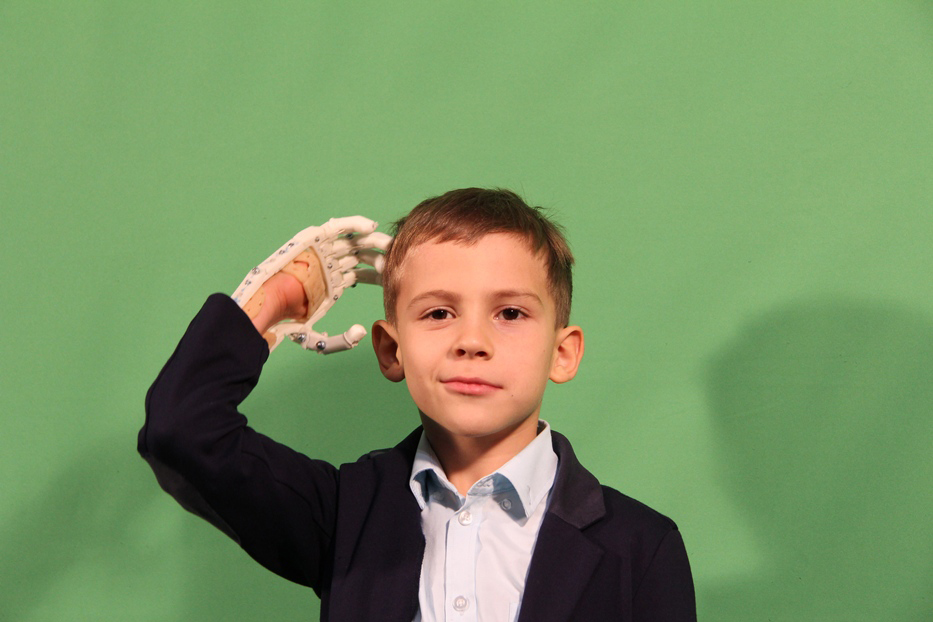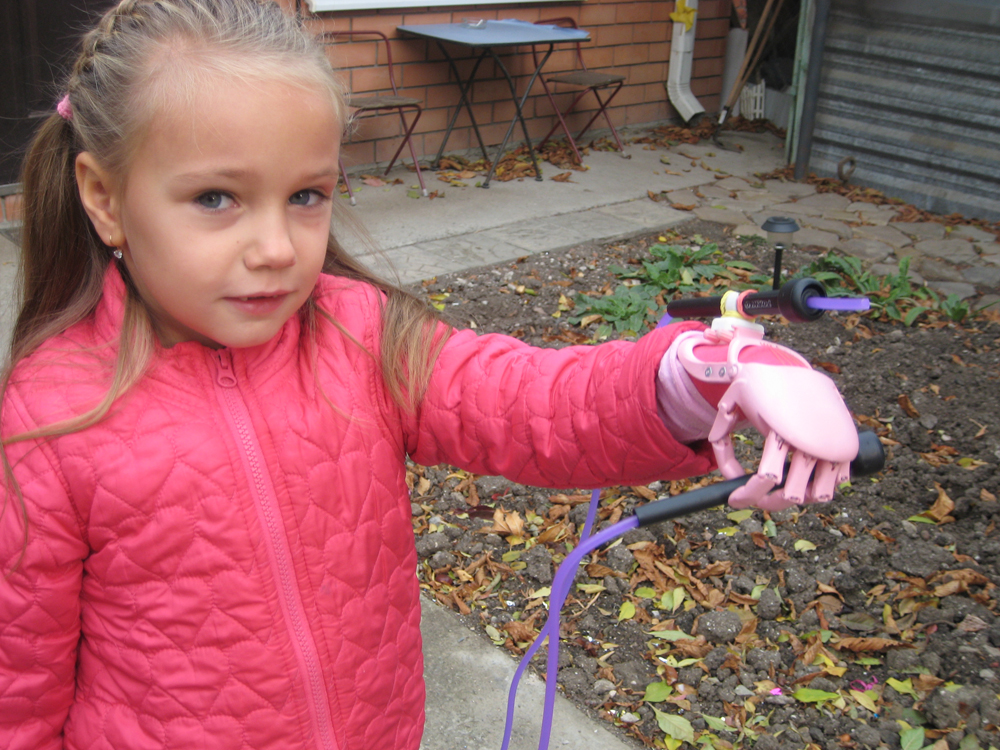
A boy with children's prosthese.
Press photoAccording to Russia's Agency for Strategic Initiatives (ASI), about 65,000 Russians need an upper extremity prosthesis each year, but only 14 percent actually get one. Many such adults do not use a prosthesis at all; instead they adapt to life with a disability and learn to perform various actions with their other hand.
The situation is far more complicated with children, especially those younger than 12. They need to train the muscles of the injured hand so it does not atrophy. Hence, they are usually provided with cosmetic prostheses; but these are uncomfortable to wear, and make it harder to adapt to life in school or socialize with other children.
A Moscow-based developer, Ilya Chekh, founder of the startup, Motorika, has invented colorful prostheses for children that are equipped with special holders for various things – laser pointers, audio players, skipping ropes, mobile phones, and so on. Thanks to this new gaming side of the prosthesis, a child with an injury can return to a normal social life more quickly, developers say.
Alexander Konstantinov, CEO of ONDOC, a private medical service, thinks that Motorika has managed to do something truly unique in developing its product because it touched an emotional side.
Most children's prostheses available on the Russian market are non-moving copies of a certain part of the human arm, and used mainly to disguise injuries. There are also body-powered and myoelectric prostheses. The former allows a child to grab things using the strength of his body, and the cost ranges from $760 to $2000.
A myoelectric prosthesis, however, uses sensors to transform electrical impulses produced by voluntarily contracting muscles within a person's residual limb into movement. The cost ranges from $19,000 to $38,000, but it's only produced abroad. Only a handful of Russian children can afford these prostheses, and they usually acquire them with help of charitable foundations.
 A myoelectric prosthesis. Source: Press photo
A myoelectric prosthesis. Source: Press photo
One day when surfing the Internet, Mr. Chekh, who has a degree in robotics, noticed a request from Can-Touch.ru, a company specializing in industrial 3D-printing. The company was planning to print several children's prostheses as part of a charity project, and Chekh decided to take part in it.
"We developed the first version of their prosthesis,'' Mr. Chekh recalls. "We printed it, finished it, and started getting feedback from patients and doctors. Then we understood that the lack of prostheses for children was a real problem.''
Motorika later managed to convince Russia's Social Insurance Fund to back the project by covering the total cost of prosthesis for little patients.
According to Mr. Chekh, his company is currently able to produce 200 to 300 prostheses a year, and productivity can be increased to as many as 1,000 units a year. Motorika's lab employs five people. They assemble the prostheses, which are made from components that are 3D-printed.
 A girl with children's prostese. Source: Press photo
A girl with children's prostese. Source: Press photo
The production process is quite simple. First, the white powdery substance called polyamide is heated by a laser and used to cut various parts. The cost of a single prosthesis ranges from $900 to $1,300.
In 2015, Mr. Chekh patented a line of body-powered children's pro
"Today, people express themselves through their appearance, and prostheses are no exception,'' Mr. Chekh said. "Being a 'cyborg' is trendy, and kids can use their prostheses as an advantage when playing and communicating with their peers.''
"CYBEY gives children a chance to communicate more easily with their peers and to feel confident,'' said Mr. Konstantinov, the CEO of ONDOC. "This product's originality, as well as its competitive price, gives the project a great opportunity to reach the international market.''
All rights reserved by Rossiyskaya Gazeta.
Subscribe
to our newsletter!
Get the week's best stories straight to your inbox